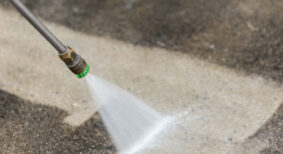Atmospheric testing is a recommended first step when selecting explosion-proof lighting for hazardous locations, while basic knowledge of IP ratings can help facilities managers choose appropriate waterproof and submersible equipment. Guidance from Larson Electronics outlines the National Fire Protection Agency’s (NFPA) class/division/group categories for electrical safety around combustible materials, and explains how IP codes rank perviousness to particles and liquid.
Explosion-proof fixtures are a safety requirement in industrial and storage facilities where flammable gases and vapours, combustible dust or ignitable fibres may be present in the atmosphere. The NFPA’s three-part label indicates: the substance’s state of matter; the likelihood of its presence; and the temperature that will trigger ignition.
“Understanding the ratings that dictate their applications is a salient step in setting up industrial lighting systems,” advises Andrew Holland of Larson Electronics. “Skipping this step could result in devastating accidents on the site, as well as an increase in spending when purchasing the lights — equipment with higher levels of explosion-proof protection are usually more expensive.”
Seven basic groupings of materials of concern include: acetylene; hydrogen, butadiene, ethylene oxide and propylene oxide; ethylene; propane; metal dusts; coal dust; and flour, plastics and chemical dusts. Safety measures are premised on the dual principles of preventing or controlling the accumulation of explosives in the atmosphere (primary prevention) and removing or restricting heat sources that could trigger ignition (secondary prevention).
Explosion-proof lighting is part of the latter. It is tightly sealed to ensure the electrical current and any spark will be contained. It must also meet stringent standards for maximum surface temperature, which are prorated to the hazard level of the material likely to be present in the atmosphere.
“Using luminaries with incorrect groupings can be both extremely dangerous and expensive,” Holland warns. “This practice is comparable to buying car insurance when you own a bicycle — you’ll end up paying more for something that isn’t entirely useful or applicable to your needs.”
Meanwhile, misinterpreting waterproof ratings is unlikely to be such a critical life-safety risk, but it could result in costly damages. IP (ingress protection) ratings denote the equipment’s resistance to infiltration of both solids and liquids. For water, that covers a 9-digit gradient. The particle scale tops out at number 6 for dust-tight.
“Waterproof protection is subject to specific tiers, including IP55, 1P67 and IP69K. These IP ratings dictate the level of waterproof protection in terms of depth of immersion, exposure to water jets and temperature,” Holland explains. “Next time you see the term ‘waterproof’ on a label, it might be worth digging a bit deeper into the IP rating — typically found in the manual or on the equipment itself — to understand how much exposure to water or dust the unit can take. This precautionary step could extend the lifespan of your lighting equipment and improve safety during operation.”








